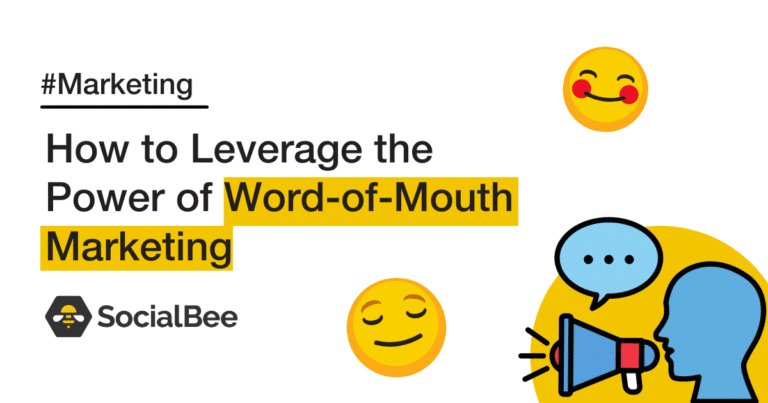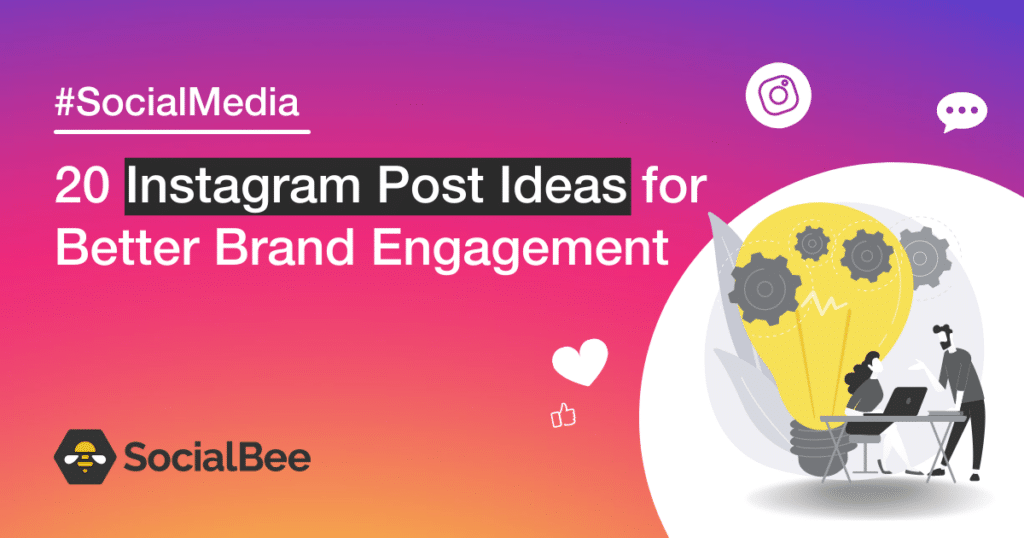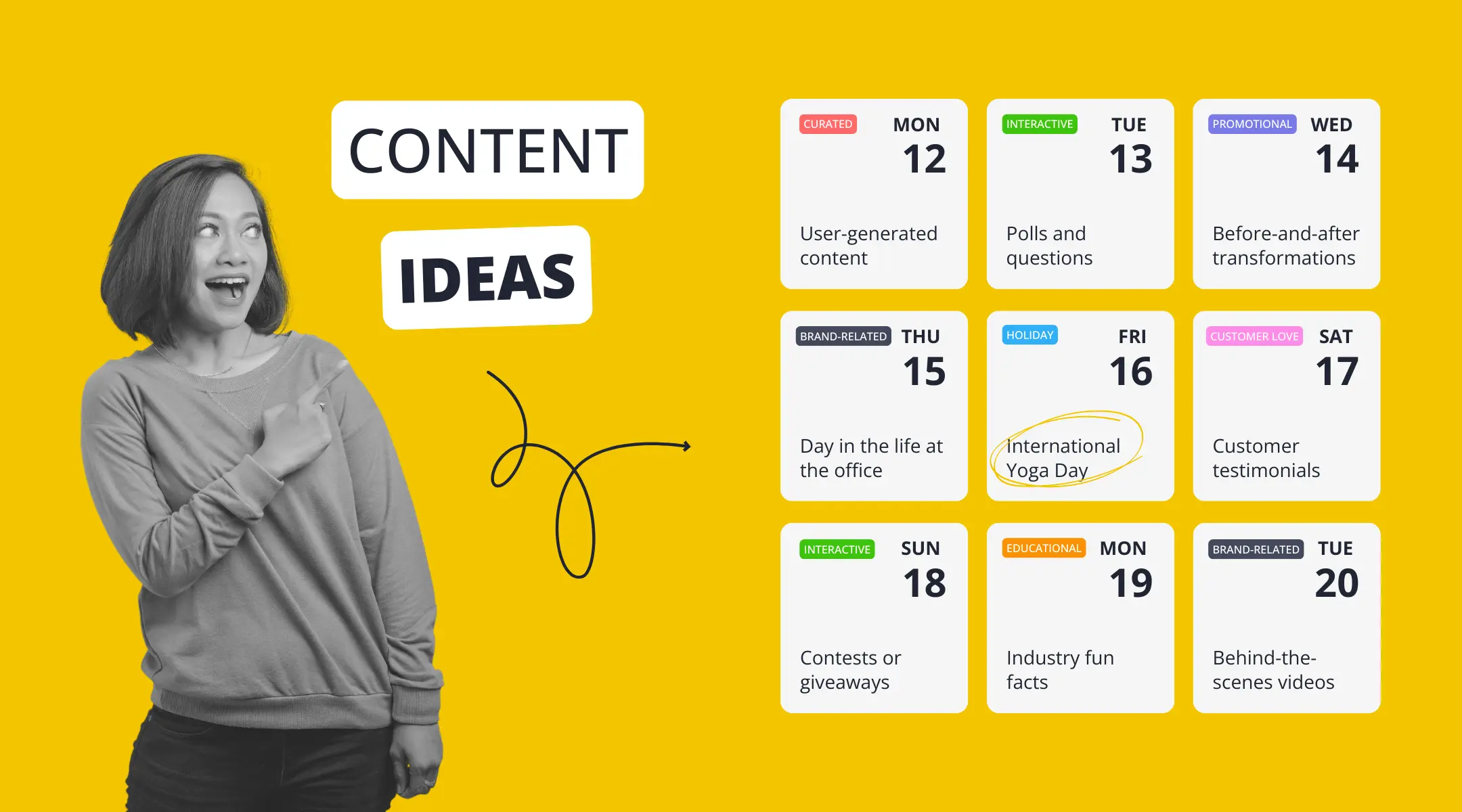
Guest Author
You’ve probably seen it before. A friend posting on Facebook asking for recommendations for a family photographer (or a hairstylist or a pet groomer). They get a bunch of comments from people with a recommendation based on their own experience.
That is the power of word-of-mouth marketing. A person asking for recommendations is far more likely to use services recommended by a family member or friend. Why? Because they trust their inner circle to give good recommendations.
A business that can harness the power of word-of-mouth marketing will exponentially increase its brand awareness and revenue.
Why Should Marketers Care About Word-of-Mouth Marketing?
Word-of-mouth marketing is one of the most trusted sources of marketing. And trust equals sales. Even the stats agree:
- 93% of consumers had their purchase decisions influenced by online reviews.
- 20-50% of purchases are the result of word-of-mouth recommendations.
Why is word-of-mouth so influential? It comes down to two traits: brand loyalty and brand trust.
Brand loyalty is key to earning long-term business. When a person has a great experience with your business, they will keep coming back. They are also more likely to tell a friend about your company.
Brand trust may be the biggest benefit of word-of-mouth marketing. Paid advertising doesn’t have the same trust level as a recommendation from a friend. In fact, total strangers may seem more trustworthy than an ad. 86% of people view online reviews as trustworthy as personal recommendations.
Word-of-mouth marketing works, and it can bring new customers to your business. Let’s take a look at five word-of-mouth marketing strategies you can incorporate.
1. Provide Excellent Customer Service
One of the best ways to engage your audience is to provide excellent customer service. You may be thinking of a dedicated customer service phone line, but you should also consider your social media marketing strategy.
About 67% of consumers use social media to seek resolutions for issues. So are your Facebook and Twitter accounts capable of handling customer service?
You should dedicate some resources, like a phone system, virtual assistants or systems which utilize robotic process automation (RPA), and other technology that can handle customer service issues raised on social media and other channels. You can also invest in client portal software to provide a seamless and efficient customer service experience.
A person can feel more cared for when they get an immediate response from someone on your team. Resolving problems can help build a strong relationship with a consumer.
Take a look at this example from Delta Air Line’s Twitter account. They were able to respond to a question quickly and ensure that someone had a great experience with their customer service. (And now we all know that lightsabers need to go in your checked bag).

On the other hand, customer service on social media can also respond to positive feedback. If someone raves about you online, it doesn’t hurt to respond with a thank you. You can even re-share their comments on your own channels.
This strategy accomplishes two goals: Making a customer feel appreciated and sharing social proof with your general audience.
Key Takeaway: Providing excellent customer service on social media will show your broader audience that you care about an individual’s experience. It’s also a great way to share positive reviews about your business.
2. Ask for Reviews
A word-of-mouth marketing strategy isn’t complete without online reviews. Positive reviews are critical to convincing a general audience that your business and products can solve their problems.
That’s not to say that you can’t benefit from negative reviews. Some consumers don’t actually trust businesses that only have five-star reviews since it suggests that the reviews are fake. Having a few four-star reviews can actually increase your legitimacy.
But what about the one or two-star reviews? It’s important to respond to those reviews and try to rectify the situation. Believe it or not, people with negative experiences aren’t lost causes. You could help fix their problem, and as many as 30% of consumers reverse their negative reviews after getting help.
So how can you ask your consumers to leave reviews? Here are a few ideas:
- Send an email asking for a review. You can ask them to fill out a form or share on social media their experience with you.
- Send a thank-you email as part of the post-purchasing experience. You may want to follow up a few days after their purchase to ask for their feedback.
Take a look at this example from Chewy, an online retailer for pet-related items. The company asks for a consumer to share their thoughts on a product for other pet parents.

Key Takeaway: Reviews are key to convincing potential customers that your business can solve their problems. A business can benefit from both positive and negative reviews to help give consumers the full picture of your customer service and products.
3. Encourage User-Generated Content (UGC)
Want to know the easiest way to promote your business? You let your customers do it for you! That is the power and beauty of user-generated content.
UGC is content that is created by your customers that they share online. A business can then share the content on its social media channels. But the real power behind UGC is that it opens your business to a whole new audience.
When people post UGC about your business, all of their friends and followers can see it. As we mentioned before, people trust recommendations more than advertising.
So how can you convince your consumers to create UGC? Here are a few ideas:
- Just ask! Make a post on social media asking to get tagged in posts with your product or business.
- If people are currently tagging you in posts, go ahead and share them on your own social media channels. When you do this frequently enough, people will expect to get their content shared if they tag you.
- Host a giveaway or contest. You can encourage people to create content to get entered into a giveaway or contest. Make sure to give an irresistible prize!
Take a look at this example from National Geographic. They celebrated hitting one million followers on Instagram by hosting a contest. The winner received a free safari trip to Tanzania. Not much was asked of the users – they had to share their best photo and use the #natgeo100contest. Then followers got to vote on Instagram Stories which photos were their favorite.

The result? National Geographic got a slew of stunning photos to share on their Instagram feed. Plus, they were able to raise brand awareness with so many people sharing content with their hashtag (over 230,000 posts have this hashtag).
Key Takeaway: The key to successful word-of-mouth marketing strategies is your customers. Encourage them to post content about you and share it on your social media channels. People love recognition from their favorite brands, and you build relationships with your audience.
4. Create a Referral Program
Okay, so referral marketing is a tad bit different from word-of-mouth marketing. Although they are both great ways to raise brand awareness to new audiences. While word-of-mouth marketing strategies focus on getting consumers to spread the news about you, referral marketing gives them a direct incentive to do so.
Establishing a referral program in your business can lead to many new customers. Referral programs can give a win-win situation to your current customer and their friends. After all, 77% of people would recommend a business to their friends if their experience was a positive one.
Take a look at this example from BrightBox, a care package service. Current customers get a reward when they refer people to BrightBox, and their friends also get a reward. In this case, everyone gets a free gift to add to their care packages.

While this may incur a small cost to your business at first, it will pay off in the long run when you have lifelong and loyal customers.
Key Takeaway: While it’s great if customers sing your praises, sometimes you have to incentivize them to share about your business. A referral program is a fantastic way to reward your customers and reach a new audience.
5. Connect with Social Media Influencers
It may be time to add #sponsored influencers to your word-of-mouth marketing strategy. Influencers are, well, influential. They can have a huge impact on increasing your brand awareness.
89% of marketers believe that influencer marketing is effective. But you have to choose the right influencers. You’ll want influencers that have a similar target audience as yours. You should also consider the influencer’s engagement rate and if they have an authentic following (because you don’t want to waste your time putting your product out to a bunch of fake accounts).
Let’s review this post from Veggiekins, a vegan food blogger/influencer.

This post is an advertisement from JCPenney about their kitchen appliances. Since Veggiekins is a popular vegan food blog, it’s no surprise that JCPenney reached out to collaborate on kitchen appliances. A recommendation from a favorite food blogger helps establish authority on the quality of their products.
Key Takeaway: Influencer marketing can help increase brand awareness and raise trustworthiness in your business. Choose an influencer that has an authentic and engaged following with a target audience that you’re looking to reach.
Final Thoughts
Taking the time to create a solid word-of-mouth marketing strategy can create brand trust and brand loyalty. It’s one of the most effective ways to earn new customers.
So if you haven’t already, start adding word-of-mouth marketing strategies to your social media campaigns. You can implement these strategies even if you have a tight budget. Building a loyal customer base is always worth the time and effort to create.
Raul Galera is the Partner Manager at ReferralCandy and CandyBar, two tools helping small and medium businesses run customer referral and loyalty programs. He’s been working in the tech sector for the past seven years and regularly writes about marketing, eCommerce, and tech.











